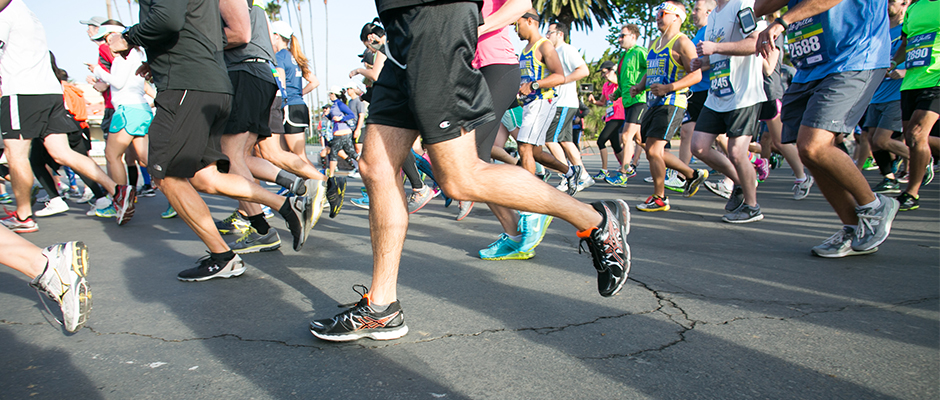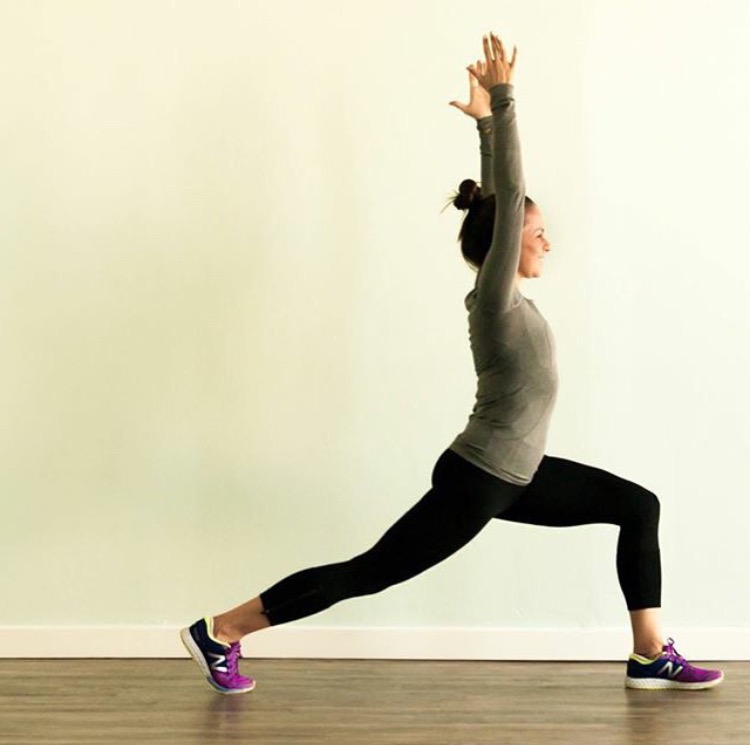While running has many well known and rightfully touted health benefits, running without performing any other form of exercise can unfortunately lead to injury according to the American Academy of Physical Medicine and Rehabilitation, nearly 70% of runners will experience injury during the course of their running career. This is the bad news. The good news? Many of these injuries can be resolved (and even avoided) with a few easy additions to your running program.
Why do running injuries occur so frequently?

Running is primarily linear motion, which means it takes place in the frontal plane going forward. There is minimal lateral (side-to-side) or rotational movement occurring. This results in overuse and over-development of specific muscles of the leg, primarily the quadriceps and gastroc/soleus complex, as well as underuse and weakness of other muscles.
The quadriceps muscle is the large muscle in the front of the thigh which is responsible for hip flexion (bending) and knee extension (straightening). During running it is one of the main shock absorbers when the foot lands on the ground, slowing down momentum and preparing the leg to take off for the next stride.
The gastrocnemius and soleus muscles make up the calf muscle group. The calf muscle is responsible for pointing the toes and extending the foot towards the ground. During running, it’s role is to produce explosiveness and power.
Because these muscles are overdeveloped and over used, they benefit from stretching and lengthening both before and after activity, to prepare for running and recover from use.
How can you avoid the chance of injury?
- Dynamic Warm-Up Prior to running this type of warm-up can be beneficial for multiple reasons. It helps increase blood flow to the muscles that are going to be used during the run, it can help lubricate joints, and can improve the flexibility of muscles which may assist in preventing injury (especially during high intensity exercise). A dynamic warm-up means that the body is moving as it is stretching, as opposed to a static stretch, where the body is still. Exercises that target the hips, knees, and ankles, as well as the muscles surrounding and supporting these joints, include high knees, butt kickers, grapevine, side shuffle, Frankensteins, and walking forward lunges.

- Post-run Recovery and Cool Down Both equally as important in injury prevention as pre-run warm-up. Yoga can be an excellent form of stretching, aiding recovery. In addition to improving flexibility in the commonly tightened muscles, yoga can also improve stability and strength in muscles that are underused during running, improve running form and posture, teach proper breathing techniques, and sharpen mental focus during running. Yoga postures that are especially beneficial to runners include downward facing dog, runner’s lunge, pyramid pose, and half pigeon.

Although there is no clear correlation between stretching and reduced incidence of injury, studies have proven that a lack of flexibility does lead to higher risk of injury. In addition to improved flexibility, stretching and yoga increase available joint range of motion and muscle length which can lead to improved running. With potential outcome of improved performance as well as injury prevention, the benefits of proper warm-up, cool-down, and additions to your exercise routine (such as yoga and stretching) are well worth your invested time.
Want a personalized training plan with Lauren? Click here!



